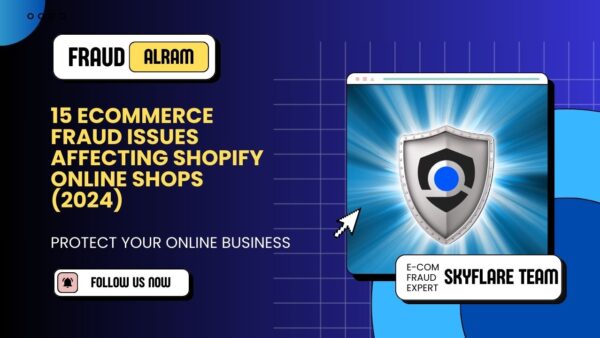International reshipping fraud is a sophisticated scam that poses a significant threat to e-commerce businesses, especially those operating on platforms like Shopify. Fraudsters exploit stolen credit card information to purchase goods, then send the goods to intermediaries and eventually forwarded overseas. This article explores the mechanisms of international reshipping fraud, real case examples, and effective strategies for reshipping fraud prevention to protect your Shopify store.

International Reshipping Fraud on Shopify
This type of fraud not only results in financial losses for merchants but also complicates the process of identifying and preventing fraudulent transactions. Shopify stores are particularly vulnerable due to the platform’s global reach and the ease of setting up international shipping.
How Does International Reshipping Fraud Work – Real Cases
Case 1: International Fraud Ring A high-end electronics Shopify store experienced a surge in fraudulent orders involving an international fraud ring. Fraudsters used stolen credit card information to buy expensive items like smartphones and laptops. These items were shipped to a U.S.-based middleman who reshipped them overseas. The fraud was detected after noticing multiple high-value orders with the same U.S. address but different billing addresses. The store responded by implementing stricter verification processes and flagging suspicious transactions.
Case 2: Address Misuse by Middlemen A luxury fashion Shopify store faced reshipping fraud where fraudsters purchased designer clothes and accessories with stolen credit cards and sent them to reshipping services. These services forwarded the items to the fraudsters’ overseas addresses. The pattern was identified after observing numerous orders linked to known reshipping centers. The store enhanced its address verification and started flagging orders going to these centers for manual review.
Case 3: Gift Card Fraud Leading to Reshipping A Shopify store selling gift cards encountered a reshipping scam where fraudsters bought large quantities of gift cards using stolen credit cards. These gift cards were then used to purchase physical goods from the store, which were sent to reshipping centers before being forwarded internationally. The scam was detected when the store noticed high gift card purchases followed by multiple orders to reshipping addresses. The store addressed this by limiting gift card purchases and enhancing transaction monitoring.
Learn more about Shopify fraud issues: 15 Ecommerce Fraud Issues Affecting Shopify Online Shops (2024)

International Reshipping Fraud Prevention: Safeguard Your International E-Commerce Business
1. Implement Robust Verification Processes
- Multi-Factor Authentication (MFA): Adds an extra layer of security by requiring multiple forms of verification.
- Address Verification System (AVS): Ensures that the billing address matches the address on file with the credit card issuer.
- Card Verification Value (CVV): Requires CVV numbers for all transactions to enhance security.
2. Monitoring and Analytics
- Real-Time Monitoring: Use Shopify’s dashboard and third-party tools to monitor transactions in real-time.
- Custom Alerts: Set up alerts for orders that meet specific fraud criteria, such as high-value orders or mismatched shipping and billing addresses.
3. Using Advanced Fraud Detection Tools
- Skyflare: Provides real-time monitoring and automated solutions to detect and prevent fraudulent activities. Skyflare’s tools help identify suspicious behavior patterns, block fraudulent transactions, and protect your store from chargebacks.

4. Educate Your Customers
- Awareness Campaigns: Inform customers about the dangers of buying from unknown or suspiciously low-priced sites.
- Secure Payment Options: Encourage the use of secure payment methods like PayPal, which offer additional protections against fraud.
5. Managing Fraudulent Orders
- Order Review Process: Manually review orders flagged as potentially fraudulent. Contact customers to verify details if necessary.
- Refund and Cancel: For confirmed fraudulent orders, cancel the order and refund the payment to prevent chargebacks.
Learn more about E-commerce fraud with us: E-Commerce Fraud: Five Main Types and Their Effects on Online Retailers
Conclusion
International reshipping fraud presents a significant threat to Shopify store owners. The owners can actually manage it with the right strategies and tools. By understanding how reshipping fraud works, implementing robust verification processes, monitoring transactions, using advanced fraud detection tools like Skyflare, and educating your customers, you can protect your business from unauthorized chargebacks. Stay proactive in your fraud prevention efforts to ensure a secure shopping environment and maintain the trust of your customers.
FAQs
What is reshipping fraud?
Reshipping fraud involves using stolen credit cards to purchase products. The products are then shipped to intermediaries and eventually forwarded overseas, resulting in financial losses for merchants.
How can I prevent reshipping fraud in my Shopify store?
Implement robust verification processes, use monitoring and analytics tools, employ advanced fraud detection software like Skyflare, and educate your customers about secure shopping practices.
What tools can help with reshipping fraud prevention?
Tools like Skyflare offer comprehensive fraud protection and real-time monitoring to safeguard your store from fraudulent transactions.
Why is it important to address reshipping fraud?
Addressing reshipping fraud is crucial to protect your revenue, maintain accurate business metrics, and ensure a positive customer experience.
What steps should I take if I detect reshipping fraud?
Investigate suspicious activity, contact the customer for verification, cancel and refund confirmed fraudulent orders, and report the fraud to Shopify and relevant authorities.




